How To Choose Web Hosting? Guide (2024)
What should you pay attention to when choosing web hosting? How do you compare server offers and pick the best one for a website, blog, or store? Hidden limits, restrictions, and more. Learn about the 23 things you need to keep an eye on. A 2024 guide.
There are thousands of companies providing web hosting services, but trying to choose or compare them is usually very difficult. It’s no use asking for opinions on forums because the answers usually look like an endless list of companies recommended by social media shills.
Anyway, asking about web hosting is a bit like asking about cars. To the question “which web hosting is the best?” there can be only one answer. It depends.
Just because a particular web hosting works well for one individual doesn’t mean at all that someone with a completely different type of business will be happy with it. A company whose website is a simple online business card, but whose employees use multiple email accounts, has particular needs and requirements, while an online store with thousands of products or the owner of a popular blog have their own.
I have been a customer of many different web hosting companies for over 14 years. I’ve also had the opportunity to see how the various web hostings used by my clients work throughout the time. From my early days, while working in website development till later on when providing SEO (search engine optimization) services, I used many web hostings, from popular and well-known names to obscure one-man web hosting providers.
In this guide, I’ll try to share my experience in this field and help you choose the best web hosting provider for you and your business.
Don’t have time to read and looking for recommendations?
Check Hostinger = web hosting + free domain and SSL included from $2.99.
- What should you pay attention to when choosing a web host? 4 basic parameters
-
19 other things to consider when choosing a web hosting
-
Web Hosting Speed
- 1. Types of drives and their limitations (HDD, SSD, SSD NVMe)
- 2. CPU – processor power and number of processes
- 3. RAM
- 4. PHP version
- 5. Redis and Memcached
- 6. HTTP/2 and HTTP/3 (QUIC)
- 7. Server type – Apache, Nginx, or LiteSpeed?
- 8. Server network speed
- 9. Number of simultaneous HTTP connections
- 10. PHP script/cron jobs execution time
- Web Hosting security
- Other (important!) considerations in choosing a web hosting
-
Web Hosting Speed
- Web hosting and domain prices
- Why should you look with a grain of salt at “recommended web hosts,” web hosting size rankings, and web hosting reviews online?
What should you pay attention to when choosing a web host? 4 basic parameters
There is a reason why at the beginning of this guide I compared choosing the best web hosting offer to the question of what car is the best pick. One driver needs a station wagon, another could use a van, and yet another is looking for a sports car. Just as cars have many different parameters (e.g., horsepower, acceleration, number of passenger seats, trunk capacity), web hosting does as well.
Below are the 4 most important web hosting parameters you need to look at first.
1. Number of websites
Here there isn’t much to explain. The number of sites – or more precisely – the number of domains, is a restriction imposed by the web host with each hosting package, which limits the number of domains you can hook up to your web hosting account.
When choosing a web hosting account limited to, say, 1-3 domains, it’s worth considering that often, despite the fact that you have just one website, you may want to hook up more domains to your web hosting account, which will de facto redirect to your homepage.
Examples of additional domains to a single website:
- IDN domains with and without non-English characters (e.g., ładnemeble.pl and ladnemeble.pl)
- several versions of domains for different language versions (e.g., .pl, .com, .de, .fr)
- domains with and without hyphens (e.g., pagename.com and page-name.com)
- domains with typos (e.g., greataccountant.com and greatacountant.com)
In summary: If the web hosting company has such restrictions, it is sometimes worth choosing an account that will allow you to handle more domains.
2. Server space
The second of the most frequently compared parameters between web hosts is server space, i.e., the disk space provided for the web hosting account.
What takes up space on the server?
- Files (PHP scripts, HTML, JavaScript, CSS, photos, images, videos, etc.).
- Databases (most of the time this is where all information is stored. For example, in the case of a blog, this would be the content of posts, pages, all WordPress settings, plugins, and theme configurations)
- Email inboxes (the contents of all email inboxes – messages received, sent, spam – including attachments)
- Logs (i.e., saved information about every time a file was accessed, server responses, errors, etc.).
Among the non-obvious things that also take up disk space, I can mention backups. I don’t mean the copies made by the provider – because these are not included in the disk space taken up in the case of shared web hosting – but copies made “on your own”, e.g. using WordPress plugins (e.g. BackWPup, BackUpWordPress, UpdraftPlus, VaultPress, BackupBuddy, Duplicator, etc.). Each such copy of files along with a MySQL database is kept on the disk and therefore takes up additional disk space.
How to check how much disk space I need?
If you already have a web hosting account, simply check how much space you are currently using. You will find such information after logging into the web hosting control panel. If you can’t find it, you can always ask support for such information as well.
Remember that your demand for disk space grows every month, even if you don’t develop the site and upload new material there. Your web hosting account naturally “swells” through, for example, the logs that get saved on each visit or the emails that arrive in your mailboxes.
What if you are just starting out with a website? You can try to estimate the amount of disk space you require, but this can prove to be a difficult task.
Examples of web hosting file sizes:
- Pure WordPress installation without theme and plugins – 50-60 MB.
- A clean installation of PrestaShop – 70-80 MB
- Photo downloaded from a site with stock or free photos- 400 kB-6 MB + even twice as much for the necessary thumbnails
- A smartphone photograph (full size original) – 1.5-6 MB (also x2, due to thumbnails)
Not much? On the one hand, yes, but on the other, if you have a site that relies mainly on photo galleries, which are steadily increasing, the size of each photo is at a premium.
Still, I think it’s hard to estimate the size of a web hosting account for a website that is just being created. I’ve seen sites, blogs, and stores that used 100-200 MB of data, but I’ve also seen WordPress sites with 50-100 GB of data each. Without knowing exactly how you’ll be using the web hosting (if, for example, you often send/receive a lot of photos by email), it’s impossible to estimate your requirement for disk space.
Bottom line: if you are moving from another web hosting – check how much space you are using and add 20-30% extra for the future. If it’s your first time looking for web hosting – don’t overpay for the space alone and choose a smaller package that you’ll be able to expand or upgrade to a larger one in the future.
What about web hostings with unlimited disk space?
There are such offers, but you can’t cheat physics. Regardless of whether the web hosting is based on a regular dedicated server or a cloud, in the end, there are still physical disks somewhere down the line, which have limited capacity and cost the web hosting company a specific amount of money. There are no drives with unlimited capacity.
So don’t delude yourself into thinking that a web hosting account with unlimited disk space for a few hundred dollars a year will allow you to upload multi-terabyte archives there, for example, if you are a wedding photographer or video editor and are looking for a place on the Internet to store your materials.
Most web hosts that offer unlimited server space have stipulations in their detailed terms of service that significantly limit the freedom of using this “unlimited” space.
3. Bandwidth
The bandwidth (data transfer) on a web hosting account can be explained simply by comparing it to the data transfer offered in a mobile cell phone plan. It is simply an indication of how much data you can download and send on a monthly (or yearly) basis with a given account.
All right, but how do you estimate how much bandwidtch you will need? If you are moving from another web hosting, the simplest solution would be to take a peek at the control panel of the currently used web hosting and check the transfer history – for instance, from the last 30 days. You can also always ask the service to send you such historical data. You add something “extra” to that, and you’ve already figured out how much transfer you will need in the future and which web hosting packages to look at.
In case you don’t have a website yet, and you want to estimate the bandwidth for your developing site, you can use a tool such as Tools.pingdom.com, which, upon entering the address of your site, will show how much it “weighs”, i.e., how much transfer is consumed by displaying one page. You can enter the addresses of pages that are similar to your future website there, for example, the website of your future competitors.
Remember to check not only the homepage, which will probably be displayed relatively rarely, but also e.g. a category page, a specific product page in a store, or a page with one of the blog posts.
By the way: the average web page “weighs” 3.15 MB (according to gtmetrix.com). Photos and images tend to weigh the most on an average page.
Once you know how much transfer is consumed by a single page view, all that’s left is to multiply that bandwidth needed to view a single page by the number of page views per month.
Example:
- Viewing one page – 2 MB of data transfer
- Visitors to the site on a monthly basis – 3,000 UU (unique users)
- The average number of visits (sessions) per user on a monthly basis – 1.3
- The average number of pages viewed (page views) during each visit – 2.75
2 MB x 3,000 x 1.3 x 2.57 = 21,450 MB
50,115 MB / 1024 = 20.95 GB
Remember: 1 megabyte (MB) is 1024 kilobytes (KB), 1 gigabyte (GB) is 1024 megabytes (MB), 1 terabyte (TB) is 1024 gigabytes (GB).
However, when estimating the required bandwidth of your web hosting, you still need to remember a few things:
- One site user = multiple views. During a visit to a site, users visit multiple pages (browse products in the store, look at the photo gallery, read several articles). Each page view is another consumption of data transfer.
- Bots are a significant part of the traffic! Visits from real, genuine users aren’t everything. A sizable portion of Internet traffic consists of so-called bots, i.e., for example, bots of search engines such as Google, which consume transfer just like any other visitor to your website. In extreme cases, such bots can consume as much as 50% of a site’s total transfer.
- Be ready for the so-called “flood effect,” i.e., a sudden huge surge of traffic to your site due to exceptional one-time events. An example would be a link to your page appearing on another popular website or, for example, a positive review of your site/service/offer by an influencer with considerable reach.
- Remember about the seasonality. Quite a few businesses are more or less seasonal. It is worth checking whether the bandwidth is “billed” on a monthly or annual basis. I also recommend you to make sure that your web hosting will be ready for, for example, Black Friday if it’s an online store or the summer season if it’s a water equipment rental site by the sea. The data transfer rate is highest during the season and may be much lower at other times.
- Always assume an increase in the number of visitors and thus data transfer in the future! After all, you want your store/website/blog/business to grow in popularity 🙂 .
The simplest solution would be to choose a web hosting with a sizable bandwidth limit and make sure that in case of a sudden increase in interest in your site, you will be able to increase the web hosting package or buy additional data transfer.
However, if you’re setting up a new site, there’s simply no need to go crazy. If you are not planning sizable marketing or advertising campaigns that will start bringing a lot of traffic to the site from day one, then choose one of the web hosting packages that have a small transfer limit, but will allow you to increase it without any problems in the future.
By the way: your website, can always be “hidden” behind Cloudflare, which will handle most of the requests to the host and significantly reduce the bandwidth. The site will be served from a copy stored on Cloudflare’s servers, rather than your website hosting directly. You can save up to 95% of data transfer this way. Well, but that’s a topic for a separate tutorial.
What about web hosting with unlimited bandwidth?
The case is similar to web hosting accounts that have no limits on disk capacity. Bandwidth always costs money. As long as you have an ordinary, average website on the hosting, then there is no problem because the whole thing is calculated so that the owners of the web hosting company can make a profit. One customer uses hardly any transfer, another a little, yet another a whole lot, but all within reason.
However, if you want to upload materials on the web hosting that consume a lot of bandwidth and will be frequently downloaded (for example, video files, legal Linux distributions, or other sizable downloads), you must expect appropriate restrictions and a not very pleasant farewell to the web hosting account and termination of the agreement.
Excessive use of resources – a sample clause in the web hosting’s terms and conditions
4. Email accounts
The last issue that is thoroughly considered when looking for the best web hosting is undoubtedly the question of email inboxes.
Here, there really is nothing to dwell on, because at first glance the only limitation visible in the offer is the number of email inboxes (email addresses) that can be set up within a specific web hosting package.
The size of the mailboxes in most cases depends on how much disk space we have in our web hosting. It’s often possible to assign a maximum size (disk space) that each email box can use, so that the mail does not take up the space necessary, for example, for website files or other things. However, some hosts allocate separate disk space for mail and a separate one for other services.
By the way: mail redirects/aliases (i.e., e.g., office@… contact@… hello@…), which forward mail to the same email inbox, do not count towards the mail account limit, and you can typically have an unlimited number of them.
However, I would like to draw your attention to the 4 non-obvious and hidden limits, in terms of hosted emails, which are worth checking:
-
The size of a single email message
The size of a single email message that you can send or receive may be limited to, say, 3 MB or 5 MB. Larger messages will be rejected by the server. -
The maximum number of emails sent per hour / per day
E.g., limit to max. 50 mails sent per hour and max. 200 sent per day. -
Maximum number of recipients of a single email message
The most common limitation is to about 100 email recipients (e.g., entered in CC or BCC). -
Maximum number of emails sent by mail()
These are emails sent by scripts, not you yourself (e.g., notifications about a new comment, a product shipment in a store, or other automatic messages). An important issue for, e.g., online stores or sites that send a lot of such automated emails to customers and users.
These issues are worth checking if you intend to send or receive larger files (e.g., photos, graphic designs sent by customers) through your email inbox, send numerous emails or target lots of recipients.
A small tip: If you intend to use your hosted email inbox or the web hosting itself to send bulk emails (newsletters, mailings, multiple notifications) and you want to significantly increase their deliverability, then consider dedicated specialized services of this type (e.g., Mailgun or Sendgrid).
An interesting feature, which is usually available as standard in web hosting accounts, is catch-all. When catch-all is enabled, all messages sent to misspelled or non-existent email addresses in your domain will be redirected to the mailbox of your choice. Other email-related features worth a look at: mailing lists, autoresponder, and vacation messages (OOO – Out Of Office). Fortunately, it’s hard nowadays to find a web hosting that doesn’t offer them as part of mail.
Allow me to interject my personal opinion on the issue of email inboxes on web hosting accounts. If you’re hoping that any hosting will offer spam fighting and spam filters that are anywhere near the level of those you might know from Gmail, you’re sadly mistaken.
The same goes for the issue of a convenient mail interface accessible through the website (webmail) or the issue of a dedicated mail app (which web hosts do not offer).
If you really want to use professional email accounts that can handle spam, then don’t use web hosting-based email services, and move your email handling to an external provider that specializes in it, such as Google (Google Workspace), Microsoft (Office 365), Zoho or Fastmail. Cost: Typically about $3-5 per month per email inbox.
I myself use several email boxes on a daily basis, but none of them have been handled by shared web hosting for many years now. All of my mail handling is done by a third-party provider (currently Google Workspace, which is Gmail for business on its own domain), and I am very happy with this solution. And so I recommend it 🙂
That’s it for the emails.
Most sites, rankings, guides, or blog posts would end an article on how to choose web hosting at this point. And most people make their website hosting decision based on these 4 parameters combined with the price and reviews found online.
However, if you have already managed to wade through the 4 most popular parameters and get to this point, I have bad news for you. This is just the beginning.
There are many more important parameters, restrictions, limits, and nuances that determine whether a particular web hosting company is worth choosing. Below I will try to present those that, to my knowledge, are worth your attention and that will allow you to choose the best web hosting.
19 other things to consider when choosing a web hosting
I divided this part of the guide with things to consider when choosing web hosting into 3 sections:
- Speed – where I have collected all the web hosting parameters and issues that affect how fast and efficient the servers, and consequently the websites you put on it, are.
- Security – here I have analyzed topics related to web hosting and data security.
- Other – at the end I collected important things that did not fit into any of the above, but which are equally significant.
You won’t often find the features, limits, and restrictions listed below in a price list or package comparison on the site. For the most part, they will be hidden on a page with detailed technical specifications, on a sub-page with security limits, or written in “fine print” in the terms and conditions. In some cases, unfortunately, you won’t find them at all.
So, should we get started?
Web Hosting Speed
1. Types of drives and their limitations (HDD, SSD, SSD NVMe)
In the realm of web hosting accounts, you may encounter 3 types of drives:
- HDD (Hard Disk Drive) – a classic, platter-type hard drive
- SSD (Solid State Drive) – much faster solid-state drives
- SSD NVMe – version up to 10-11x faster than standard SSD drives
Drives, in addition to read and write speeds expressed in MB/s (or GB/s), also have a parameter known as IOPS or the number of input/output operations per second. In the case of hosted drives, what is important is not only how fast the drive is, but also how fast the server is able to read or write information to the drive. The rule is simple – the faster the disk, the better.
Below is a speed comparison of sample HDD vs SSD vs SSD NVMe drives:
| HDD | SSD | SSD NVMe | |
|---|---|---|---|
| Read throughput | 215 MB/s | 560 MB/s | 3,200 MB/s |
| Write throughput | 215 MB/s | 530 MB/s | 1,900 MB/s |
| IOPS read | 84 | 100 000 | 380,000 |
| IOPS write | 207 | 90 000 | 360,000 |
Table based on sample drives: HDD – WD Black Edition 7,200rpm, SSD – Samsung 860 Pro SSD, NVMe SSD – Samsung 960 PCIe NVMe SSD.
Of course, there are also significantly slower drives (e.g., HDD with a read/write throughput of 150 MB/s), as well as much faster ones. These are just examples I used to show you the scale.
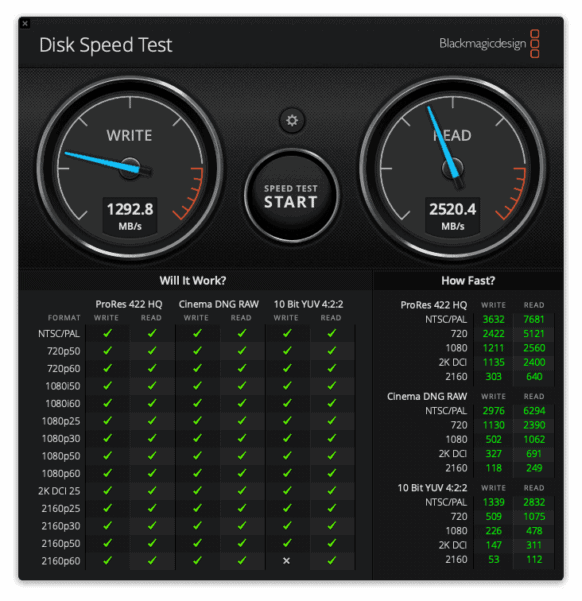
You also need to know the fact that some web hosting companies limit the IOPS, i.e., the number of operations you can perform on the drive simultaneously, which negatively impacts the speed of sites hosted there – especially when operating under load (e.g., due to higher traffic). In my opinion, the absolute minimum is 100 IOPS. It would be good if the web hosting offered 1000 and more IOPS.
Some web hosts also introduce a limit on the maximum number of files that can be stored on a single web hosting account. It is worth paying attention to this restriction, especially if we plan to create, let’s say, photo galleries on our site, where several thumbnail files are automatically created for each image. A lot of additional small files are also created by all kinds of caching systems. Fun fact: A fresh installation of WordPress, without any themes or plugins, contains 2145 files. The recommended minimum is 100,000 files, but that ultimately depends on your needs.
When browsing the web hosting limits page, also be sure to check whether the company limits the read speed of the drives in any way. After all, so what if the latest and fastest NVMe SSDs are used, if the read speed can be limited to, say, 50 Mbps.
Another limitation – although this one is more of a fun fact – is that even an offer presented as SSD web hosting or SSD NVMe web hosting, may not necessarily be entirely based on these faster drives. Some companies keep only a portion of the data on SSDs and the rest on cheaper and slower HDDs. For example, MySQL database and files are on SSD drives, but email, in which case the speed isn’t as important, is kept on HDDs. That is worth knowing.
What you need to remember when it comes to disk web hosting is this:
- Don’t choose HDD web hosting.
- SSDs will be faster, but they are not the state of the art
- NVMe SSDs are 10-11x faster than SSDs
- Check the limitations in IOPS (minimum is 100, preferable – 1000 IOPS and more)
- Check the restrictions regarding the maximum number of files (minimum is 100,000 files)
- Check if the web hosting limits the read speed of its drives (better if it doesn’t)
2. CPU – processor power and number of processes
Each action on your site (e.g., visiting the site, submitting a contact form, adding a comment to a blog, placing an order in the store, etc.) is a separate process, which – just like any task on your home computer – uses processor (CPU) resources.
Web hosting companies limit the offered CPU resources on all website hosting packages, to prevent a single very demanding client from clogging up the entire server with his/her burdensome tasks, blocking other web hosting users in the process.
In the server specifications, it’s worth checking how much CPU power we will be granted in a given web hosting package. Often this value is given as a percentage of the CPU, showing how much of a single CPU core our websites can use (e.g., 50% CPU, 100% CPU, 200% CPU), and sometimes as MHz or GHz (e.g., 1 GHz CPU).
Another CPU limitation that you may encounter when carefully browsing the web hosting limitations is the maximum number of concurrent CGI/PHP processes. This is a value (usually ranging from several to dozens) that determines how many processes (tasks) can be running simultaneously. If, for example, the web hosting allows a maximum of 5 processes, each subsequent process must wait for its turn. In the case of higher site traffic, this can make a big difference. My suggested minimum is 10 processes, but it all depends, of course, on how many and how much burdensome the pages you put on the web hosting are.
The rule of thumb when it comes to CPU and the maximum number of processes of a website hosting service is simple – the more, the better. The more CPU we can use, the faster all tasks and processes will be executed, so ultimately all dynamic pages will run faster. My recommended minimum for fast and efficient operation is 1 CPU core / 1 vCore / 1 GHz / 100% CPU.
3. RAM
In the case of RAM, the situation is analogous to the processor and the computer you use at home or work.
There are two kinds of restrictions web hostings may have:
- The maximum amount of RAM used by all processes on a single web hosting account
- The RAM limit for 1 PHP process (memory_limit).
It’s worth ensuring that both values are as high as possible because this has a direct impact on the speed of web pages – especially at times of heavy traffic.
In my opinion, a reasonable minimum is 1024 MB (1 GB) of RAM per account and 512 MB per 1 process (memory_limit).
4. PHP version
Let me start with a question – why should you care about the operating system updates on your computer (Windows, Linux, Mac) and mobile devices (Android, iOS)?
Well, because updates usually introduce three important things:
- Enhancements (new features)
- Bug fixes (including security bugs)
- Performance improvements (i.e., speed of operation)
And just as we should update the operating system on the devices we use, we should make sure that we always use an actively supported (and preferably the latest) PHP version on our web hosting.
Unfortunately, some web hosts stopped developing in this regard long ago and still offer old versions of PHP that are no longer supported or patched in terms of security by default.
Each PHP version has a “lifespan” that starts from its official launch, through the period of active support during which it’s developed, to the period of security support, when a particular version is admittedly no longer developed and improved, but all the bugs found in it are still patched.
When choosing the best web hosting, make sure that it offers the latest version available – this will usually mean that the company hasn’t stopped its development yet and cares about security and performance, providing more PHP versions and allowing you to set them via the control panel.
Alright, but let’s focus on performance and speed because I’ve put the PHP version right in this section. Below you’ll find a comparison, showing how much faster and more efficient each successive PHP version is, and thus how much faster sites using that particular version will run.
PHP version 7.0 is more than 2.5x faster than previous versions (5.6 and earlier), and each subsequent version is faster than the previous one.
So it’s worthwhile – if only for the sake of the site’s speed – to take care of updates and opt for a web hosting that allows them.
To sum up:
- Check this page for the latest PHP version
- Make sure your web hosting supports the latest version
- Regularly change the PHP version on your web hosting account to the latest one (you can often do this in the control panel).
5. Redis and Memcached
Redis and Memcached are similar web hosting add-ons that allow you to store some – frequently used – information using RAM, so that this information is available much faster than if you keep it exclusively in the database or on a drive. So much for theory.
In practice, if the web hosting offers Memcached or Redis, we can (e.g., using a WordPress plug-in) take advantage of this fact to make our site keep some of the frequently used information there, thus reducing database queries and ultimately speeding up the website.
How much can using Redis or Memcached speed up a site? Of course, this has been thoroughly tested, so here’s a chart showing the performance of a WordPress-based website (on the standard Twentyseventeen theme) and WooCommerce & Storefront before and after the implementation:
So it’s worth choosing a web hosting that supports one of these systems and, if possible, implement it later on to make the site run faster.
6. HTTP/2 and HTTP/3 (QUIC)
HTTP (Hypertext Transfer Protocol) is the protocol used to transfer data between a server (web host) and an end device (such as a browser on a computer or phone).
The Web communication standard was first presented in 1989. The HTTP/1.1 version has been in operation since 1997, and the HTTP/2 version, which beats its predecessor in speed, has been in operation since 2015.
The HTTP/2 standard has been supported for years by all the leading browsers (Chrome, Safari, Firefox, Opera, etc.), and sites using HTTP/2 run much faster, thanks to upgraded server-user communication.
What does this look like in practice? Check for yourself in this test.
2015 vs. today feels like a chasm in the world of technology. Unfortunately, despite the fact that HTTP/2 is a widespread standard, and the first hosts and browsers are already starting to support the next version of this protocol (HTTP/3), not all web hostings support HTTP/2 yet.
When deciding on a web host, check whether it supports the already widely used HTTP/2 protocol. And if you want to be up-to-date, you can pay attention to whether the web hosting offers (or at least is already testing) HTTP/3, also called Google QUIC.
7. Server type – Apache, Nginx, or LiteSpeed?
Shared web hostings can be based on different server software. The three most popular ones are Apache, Nginx, and LiteSpeed. Which one is worth choosing?
In many speed tests, the clear leader turns out to be LiteSpeed web hosting, which can be up to 75x more efficient than Apache for a WordPress-based site with a cache.
So I can definitely recommend you to choose a web hosting that is based on LiteSpeed.
8. Server network speed
The speed of your internet at home, or from your mobile service provider, can be evaluated with tools such as Speedtest. And just as your Internet connection is limited to a certain upload and download speed, so is the Internet connection of the server on which the web hosting is offered. Although, of course, in the latter case, the speeds are significantly higher 🙂
The bandwidth of the web hosting does not have a significant impact on the speed of simple, small websites. However, if you offer, for example, audio or video content on your site, or files for visitors to download, it is worth taking an interest in what kind of bandwidth your web hosting has.
Check the bandwidth of your web hosting server. The higher it is, the better. The most common speeds are 500 Mbps, 1Gbps and 10Gbps. We can consider the former value (500 Mbps) as a good minimum. You will usually find such information in the specifications of the web hosting offer.
9. Number of simultaneous HTTP connections
One of the web hosting security parameters you can encounter sometimes is the limitation of the maximum number of simultaneous HTTP connections. This parameter determines how many people, can simultaneously send requests to your pages on your web hosting account. A request is typically the display of a single web page.
In some web hostings, you may also encounter – usually in addition to this first limit – a restriction on the maximum number of HTTP requests per day.
What happens when the limit is exceeded? Simply put, the Web page will not load for the visitor. This effect is familiar to anyone who has tried to hunt for some promotion/sale/offer that started at a particular time on an online store or ticketing service. Maybe after another page refresh it will work, or maybe you won’t get to catch a bargain after all, because only a portion of the lucky visitors whose requests were handled by the web host will catch on.
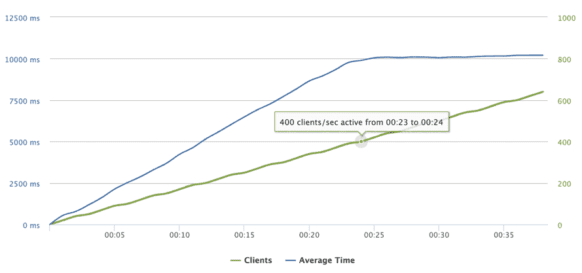
So it is worth looking for a web hosting that does not have such limitations or has them set high enough that they will not be a limitation in the case of increased traffic to the site as a result of an advertising campaign, a sale, or the so-called flood effect. The minimum is 100 simultaneous HTTP connections.
10. PHP script/cron jobs execution time
Another limit that can be important in specific cases is the maximum execution time of a PHP script or a cron job.
In most cases, in normal use, this limit is irrelevant. Normal, everyday PHP scripts on websites, stores, or blogs are executed in fractions of seconds.
However, it is worth knowing that such a limitation exists, and in specific cases where long script execution is required (e.g. backup, large data operations, PHP script downloading a lot of data from external servers), it is worth considering web hosting without these limits (or better – rebuilding the query scripts so that they do not take so long to execute :-)). In my opinion, the minimum time is 30-60 sec.
Web Hosting security
11. Backups
Every web hosting provider should offer to create and store backups, i.e. backups of everything we have on our web hosting account (files, databases, emails, etc.).
Backups are useful not only at the time of a malfunction, but also in case of our account being hacked, the site being infected by a virus or, for example, us mistakenly overwriting files or data.
The two most important backup-related issues to consider are:
- how often are the backups done? (the minimum is once a day – some companies do them more often, e.g. every 6 hours)
- how long are the backups stored? (the minimum is 7 days in my opinion, but the longer the better).
Also pay attention to what the restoration of data from such a copy made by the web hosting company looks like. In some cases, it will come down to a single click in the control panel, in others to downloading a copy and uploading it yourself, and in yet others to sending a proper request to the customer service.
I’m also aware that there are web hosts that make you pay for recovering data from a backup. Steer clear of them! Creating, sharing, and restoring backups is something that can be completely automated, so it’s not worth paying extra for such a service.
I’ll add one small side note. No matter how reliable and trustworthy a web hosting company is, it’s always a good idea to make backups on your own and keep them on another hosting company, a cloud drive or your own local drive. Just in case, so as not to have all your eggs in one basket.
There have already been cases where well-known companies disappeared overnight, along with all their customers’ data. Prolonging crashes are a thing as well, during which it would have been faster to run the site from a backup stored on another web hosting company. Someday I will prepare a tutorial on this subject :-).
12. Free SSL certificate – Let’s Encrypt
The times when you had to pay for an SSL certificate, giving you https:// in your site address, a little “padlock” in your browser, and an encrypted connection, are gone. SSL certificates are free and – except for rare cases – not worth paying for!
There are three types of SSL certificates:
- DV (Domain Validation) – a standard SSL certificate, to obtain which we need to confirm that we own the domain.
- OV (Organization Validation) – in addition to the domain, the company that applies for such a certificate is also checked.
- EV (Extended Validation) – is the so-called full authentication, that is, checking the domain, and thoroughly checking the company requesting the certificate. The effect is that in the browser, in addition to the website address and a padlock, you will also see the name of the company.
Unless you are in a business that for some reason requires OV or EV certificates (such as a bank), you are in the 99% of cases that can confidently use a free DV certificate, such as offered by Let’s Encrypt, for example.
Most web hosts offer support for free SSL certificates from Let’s Encrypt by allowing you to easily generate and activate such a certificate for each domain from the account control panel.
However, companies that do not offer such an option still exist and persuade you to buy a paid SSL certificate, which is technically no different from the free Let’s Encrypt. Better yet – some companies have in their price list a higher fee for “renewing” a paid SSL certificate for another year when in practice the certificate cannot be renewed and as such, it is in fact a purchase of another “new” SSL certificate. It is worth checking this beforehand.
13. Email security (SPF, DKIM, and DMARC).
On the topic of security, it’s impossible to forget about email security, that is, the email inboxes that our future web hosting will handle. I’m talking about ways to authenticate the mail we send so that recipients can be sure that we are in fact the sender and no one is impersonating us. There are 3 mechanisms used for this:
- SPF – This is an entry (record) in the DNS of a domain, which tells the email inboxes we write to – “this server (IP address) can send correspondence from this domain – don’t put it in spam.”
- DKIM – this is a key affixed both into the DNS and the headers hidden in the emails sent, which confirms that the sender of the message is legitimate (has a key to sign the email that matches the public entry in the DNS)
- DMARC – is a mechanism that combines the functions of SPF and DKIM, and additionally allows for several other possibilities in cooperation between the largest email providers (e.g., Gmail)
It is worth checking if our future web hosting supports all 3 solutions and whether it offers to enable them by default or set them through the web hosting control panel.
14. Security and stability of DNS – DNSSEC and DNS Anycast.
DNS can be explained by comparing it to a sort of a phone book for websites. When you type something in a browser search bar, the address book checks to see what IP address the particular domain is at. The same thing happens, for example, when sending or receiving mail, as I wrote about in an earlier point.
So what can your web hosting provider do to ensure the security of the DNS servers your domain points to?
- Provide DNSSEC – that is, security against redirecting your domain to somewhere else (such as a fake site). This works so that when a visitor types in your site’s address, their query returns it with an authentication key that confirms that the IP address is correct, and your site should be exactly on the web hosting it’s on.
- Offer DNS Anycast – which is the service of maintaining DNS servers in several different locations around the World. When one DNS server stops working, another one takes over, and all sites continue to run smoothly.
In addition to security, DNS Anycast also has an impact on the site speed. Multiple DNS servers, located in different countries on various continents, usually speed up the time it takes to translate an easy-to-remember website address visited by people from all over the world into a string of digits, which is the IP address. Using DNS Anycast, a user from, for example, the U.S. queries the nearest server located in the U.S., instead of a server in Europe, which reduces the time of such a request.
Both of these issues aren’t mandatory and the web hosting can do just fine without them, but it would still be better if the web hosting company offered both of them – not least for security reasons.
15. Web hosting compliance with GDPR
Do you dislike closing all those windows related to cookies, GDPR and privacy policies after accessing certain sites? Unfortunately, running a website that will collect or process any EU citizens’ data (even if just the email addresses) “falls under” GDPR, so you need to make sure everything is by the book.
In order to be “GDPR-compliant”, you need to, among other things, sign a personal data processing agreement with the web hosting company, which will hold this personal data on its servers.
Sometimes such an agreement is in paper form, sometimes it’s enough to have appropriate clauses in the terms and conditions at the time of purchase or check a specific checkbox when ordering the web hosting, or later, somewhere via the control panel.
Regardless of the form of signing such a personal data processing agreement, it is worth checking before deciding on a particular web hosting whether a particular company offers it. In European companies, there is usually no problem with this, but in the case of web hosting outside the EU – it can be different. It is better to make sure before buying a year worth of web hosting.
Other (important!) considerations in choosing a web hosting
16. Databases (quantity/size limits).
An integral part of most websites, blogs, e-commerce, or other services is a database (e.g., MySQL). This is the place where all the variable and dynamic information about the website is stored.
What limitations in this regard can you encounter in web hosting services?
- The number of databases – the first and most common limitation. For simplicity, you can assume that one website equals one database.
- Maximum database size – usually the size of the database is limited by the disk space offered in a given web hosting package, but this isn’t always the case. There are web hosts that limit the size of the database.
- The maximum number of simultaneous connections to the database – if your site does not use a cache, then typically each operation on the site (displaying a page, submitting a form, browsing, etc.) takes several to a dozen connections to the database. Some web hosts limit such connections, which in effect slows down the site (each subsequent connection “waits in line” or is rejected).
- The number of simultaneous connections to the database per user (max_user_connections) – this is not about a user visiting your site. With ordinary web pages, one database has one user. So this is information about how many simultaneous connections to the database there can be, within a single Web page. The higher this value is, the better (I recommend at least 100).
- The maximum duration of a single query to the database – usually this does not have any impact on the operation of simple and correctly written from the programming side of things website (for example, on WordPress without any “weird” add-ons), but in some cases, it can make a difference. The minimum is 30-60 sec.
Check the web hosting for database restrictions. Stick to the assumption that one site equals one database. Pay special attention to any restrictions on the number of connections to the database – ideally, there should be none or be set as high as possible. If you intend to run a site that will operate on more data, also examine other limits related to database services.
17. Uptime and SLA
Every web hosting has outages. The question of uptime is not “if” but “when” it will happen. The most important thing is whether the web hosting company is well-prepared for such an event and is able to quickly restore all services.
Besides crashes, your sites may also be temporarily unavailable due to changes and improvements that are made to the web hosting from time to time – most often at night when there is less traffic – and which require a temporary shutdown of the server.
To ensure that such a phenomenon is not too common, it is worth familiarizing yourself with the term SLA (Service Level Agreement), which is a web hosting company’s promise that services will be available for a designated percentage of time.
The most common SLA guarantees range from 99.00% to 99.99% (most commonly, for example, 99.50%, 99.90%, 99.95%).
A lot? Well, now let’s see how such guaranteed SLA translates into availability (or rather – unavailability) of web hosting services in practice:
| AVAILABILITY (IN %) | UNAVAILABILITY TIME PER MONTH |
|---|---|
| 95% | 36 hours (2160 minutes) |
| 99% | 7 hours (432 minutes) |
| 99.50% | 3.5 hours (216 minutes) |
| 99.90% | 43 minutes and 12 seconds |
| 99.99% | 4 minutes and 19 seconds |
| 100% | 25 seconds |
When choosing a web hosting company, check whether it offers any SLA, because contrary to expectations – it doesn’t have to do so at all. And if it does, what kind is it and does it suit you.
18. SSH access
Enabling SSH (command line) service by the web hosting, at first glance, does not seem like a necessity. After all – you upload files through the control panel or use the installer, which will automatically install WordPress for you. So why do you need a command line that you don’t know or understand anyway?
In part, you may have a point, but there are a few situations where access to SSH on your web hosting can be useful.
The first and basic thing that comes to my mind is the issue of transferring lots of data: making or restoring a backup by yourself, moving to another website hosting, downloading or uploading data to another server. SSH simply makes all these operations much easier, faster, and more secure than using FTP or the web hosting control panel. It allows you to use a more secure, encrypted version of FTP, namely SFTP. Additionally, owners of WordPress-based sites may be interested in the fact that the command line is essential for easy and fast operation of WordPress via WP-CLI.
If you’re not a tech-savvy individual and don’t need SSH at the moment, also consider the fact that someday you may require the services of a company or a freelancer, to whom such access will simplify the work on, for example, changes to the site or cleaning it up after a hack or virus attack.
Summary: It isn’t a “must have”, but it’s definitely worth choosing a web hosting with SSH access.
19. Host location
Does the location of the web hosting make a difference? Will hosting with servers in your country be better than one with servers abroad? There can be only one answer to such questions: it depends.
Why does location matter? Online gamers know the answer very well. It’s all about the ping, which is the time, measured in milliseconds, that it takes for data to travel from one location to another. In this case: from a visitor of your website to the web hosting server. And back again.
And, since a lot of data is sent and received in multiple packets when you visit a website, all data latency matters.
The first fundamental question you need to answer at the very beginning is: Where will the visitors to your website be from? Mainly your country? Europe? Or perhaps from all over the world?
Ping depends largely on the physical distance between the server and the user, so the closer the server is to your website, blog, or store visitors, the better. Although this is not a rule that works 100% because there are several more variables.
The differences between an English user visiting sites located in France and those with servers in Germany, or Spain are usually minuscule. A visitor from the UK and a website from the US – that’s another story.
In my opinion, first of all, it is worth sticking to the rule that the web hosting should be located on the same continent as the site visitor.
That is, for example:
- If your site will be visited mainly by users from the UK, then look for web hosting located in the UK or Europe in general
- if your site will be visited by users from all over Europe, then make sure the web hosting is located in Europe (e.g. Frankfurt, London, Amsterdam)
- if your site will be visited mainly by users from the USA, then look for web hosting located in the United States
What if your customers are from all over the World and you want to be close to them at all times when it comes to the server location? In that case, in addition to web hosting, look for additional CDN services that will store copies of your site on servers around the world. Then every visitor will connect to the server located closest to him. To give an example, the already mentioned Cloudflare is such a service.
You need to remember that the location of a web hosting company is not equivalent to the location of its servers. The fact that a company is located, for example, in London or Birmingham, means nothing, because its servers may be located in server rooms in, for example, Germany or France. If you do not find information about where the servers are located on the web hosting website – ask about it.
It may also happen that a given company rents servers in different locations and server rooms, and part of the services offered are provided from one location, whereas the rest is from another. This is worth checking.
In the above comparison, I did not at all include features that are available in practically all popular web hosts on the market, and whose operation is the same everywhere. E.g. cron, logs, custom error pages.
I have only discussed those parameters and features that differ between companies and web hosting packages and that can weigh on whether a particular offering is good or not.
I have also consciously left out the issues of web hosting convenience. Often, convenience issues are very subjective, and while I do have my opinion, for example, on different types of web hosting control panels (cPanel, Direct Admin, Plesk, etc.), I know from talking to many people that opinions about each web hosting control panel are divided. At the end of the day, it’s largely a matter of getting used to them anyway, and the ideal web hosting is one that simply works and which doesn’t make us work our way through the control panel too often 🙂
Well, in terms of the web hosting control panel, it is worth paying attention to 3 things in particular:
- Does the panel have a convenient installer? Such an installer allows launching popular scripts such as WordPress, Joomla, or PrestaShop with just a few clicks, for example. A convenient solution, especially if you intend to host more websites.
- Does the web hosting have Cloudflare integration? Good integration with Cloudflare via the control panel allows you to easily plug your site into this CDN and manage DNS entries, without having to log into a separate CF account.
- Does the web hosting panel have two-factor authentication (2FA)? The second login component in addition to the password (e.g. a code sent by SMS, a one-time code in the app, or a U2F key), allows additional security of the hosting account against hacking and phishing.
Another important issue, which I left out of the above list, is the matter of contact with the web hosting company and the customer service. When choosing a web host, pay attention to how the support of a particular company works.
- What are the working hours?
- What forms of contact are available?
- Is it helpful?
- How quickly does it respond to questions?
- Do the answers solve the problem?
It’s a good idea to work your prospective web hosting partner over in these respects so that if you have any trouble in the future, you can rely on him without waiting half a day for the problem to be solved.
OK. Now that we’ve got that out of the way, I’d still like to mention to you a couple of things (no longer strictly technical) that are worth knowing when considering where and which web hosting to choose.
Web hosting and domain prices
I also often encounter that the choice of web hosting is dictated by the cost of registering domains in a particular company. This is a mistake, and I would like to explain to you why.
Web hosting service and the domain are two separate things.
Just like a phone and a SIM card of a telecom operator. Of course – you can always take a phone from the operator when renewing your subscription contract, but you can also buy a new or used smartphone anywhere else and put any SIM card in there in a postpaid or prepaid offer. Incidentally, buying a phone yourself will be cheaper than a “smartphone for 1 dollar” paid off through the operator in expensive installments every month.
Domains and web hosting work identically. You can buy and maintain a domain from one company and the web hosting from another. And you can transfer the domain or web hosting to a competitor at any time you feel like it.
Check:
.dotisto = Blazing Fast Domain Search. 1200+ TLD intelligent suggestions and many tools.
Also beware of the “tricks” of web hosting companies offering “domains for 1 euro”, “domains for 1 cent” or even domains for free. This is a trick designed to tie you to a particular company.
Always check the price of a domain renewal after the first year and the years after! Often, companies that offer to register a domain for next to nothing, want to make up for the loss in the following years. After all, domains are bought not for a year most of the time, but for a longer period.
It makes sense to choose the best web hosting and the cheapest domain. Unlike web hosting, a domain registered with company X will be the same as with company Y.
All web hosting companies or domain registrars are just intermediaries between you and ICANN, which oversees the assignment of .com domains (or another intermediary entity, in the case of domains with different endings) anyway.
And just as you can change your mobile operator by swapping the SIM card in your phone, you can at any time indicate that the domain should point to another web hosting (by changing the DNS servers). And if a particular domain operator raises prices, you can always transfer the domain somewhere else. Domains and web hosting are two independent things.
Which is more profitable: Cheaper (or free) domain registration, or cheap domain renewal in subsequent years?
| OFFER | COST AFTER ONE YEAR | COST AFTER 3 YEARS | COST AFTER 5 YEARS |
|---|---|---|---|
| Domain for free, and in the following years $18.99 | $18.99 | $56.97 | $94.95 |
| Domain registration for $9.99 and renewals for $8.99 | $18.98 | $36.96 | $54.94 |
Why should you look with a grain of salt at “recommended web hosts,” web hosting size rankings, and web hosting reviews online?
First of all, because – as you probably know very well – not all opinions you find on the Internet are genuine. Unfortunately, as in many other places and industries, there are quite a few companies in the web hosting industry that are not very honest with their customers, flooding (either on their own or with the help of external companies specializing in this field) the Internet with positive reviews of their services.
Secondly, because – going back to the car analogy – every online project is different and has different requirements. There are web hosts that have thousands of satisfied customers, but most of them are owners of simple, run-off-the-mill websites that have trace amounts of visitors. When such web hosting wants to use a company that runs a store with hundreds of thousands of products and orders every day, there is a problem.
Thirdly, because the customers are different. One web hosting customer won’t notice when his site doesn’t work in the evenings, has repeated outages for hours on end, or loads endlessly due to the traffic. Another customer, on the other hand, will resent a 4-minute site outage at 3 a.m., which was notified to him by SMS monitoring, after all, it’s the 4th time this year. Both customers will be happy to advise (or advise against) the web hosting they happen to be using when you ask them on Facebook.
Fourthly, because you can have different experiences within a single web hosting company. Web hosting companies have anywhere from several to hundreds of physical servers (machines) on which accounts are set up for customers under shared hosting. You may end up with a trouble-free and unencumbered machine that runs quickly and efficiently. However, it could be the other way around and your web hosting account will be set up on a server that has constant technical problems and difficult and demanding customers who are your “neighbors” with whom you share a server.
Well, and fifthly, it is not worth paying attention to the rankings of the number of customers (or in the case of web hosting – the number of domains served) for the reason that in the case of web hosting, size often does not matter. A large hosting company may, in case of difficulties, treat you like a superfluous burden that it needs to get rid of, while a smaller company will be happy to take care of you and help you solve your website problems. Or the other way around. From experience, I can simply tell you that there is no rule – good support and great service quality happens in both the biggest companies and the smaller ones. The same goes for terrible support and horrible service quality.
Summary: Of course, check what the people on the Internet have to say about a particular company and what kind of reviews it has. Also ask your friends about their experiences with web hosting companies. Remember, however, that the feedback should only be a hint that says a particular company is worth looking into (and thoroughly inspecting the quality of their support and service).
Remember: when it comes to web hosting, it’s not opinions, brand, or popularity that count, but facts and specific technical parameters.
Good luck with your web hosting choice!!! 🙂
PS, If this guide helped you, please share the link to this page on Facebook, LinkedIn, Twitter, or other social media. I have put a lot of work into its preparation and I will be very grateful to you for sharing the knowledge with others. And your friends looking for web hosting will surely be grateful to you too!
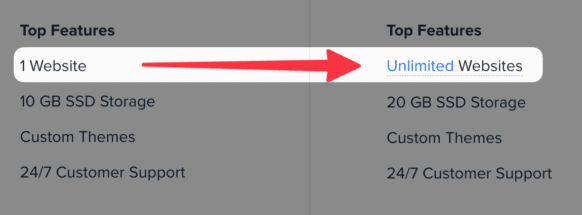
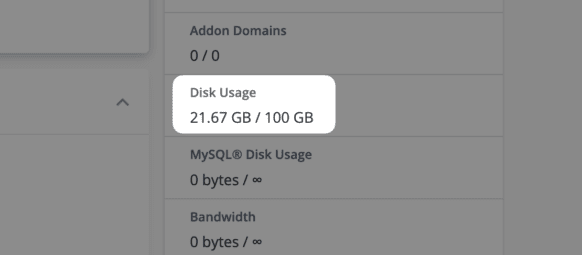

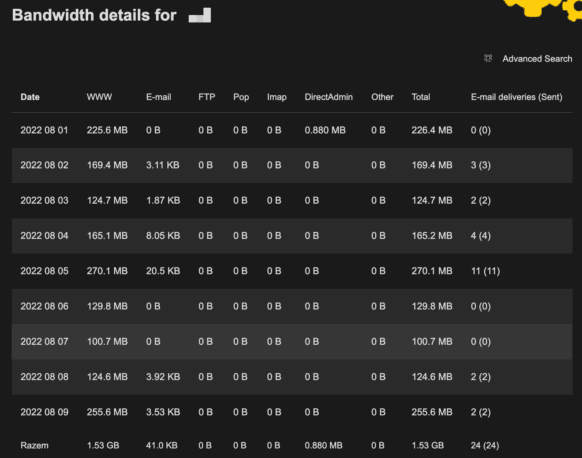


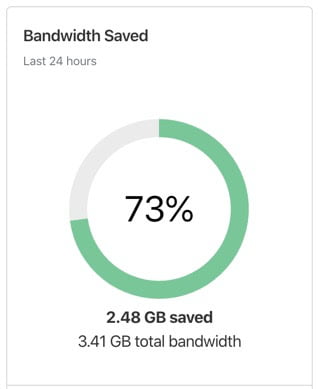
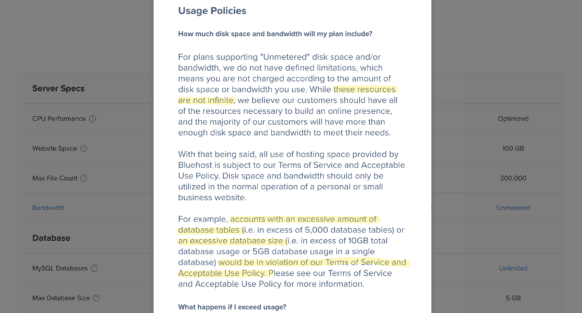

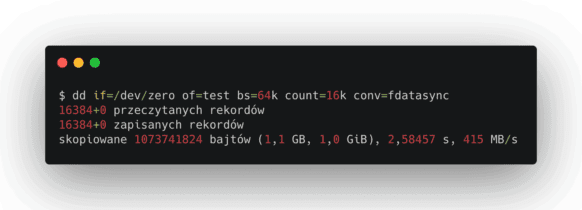


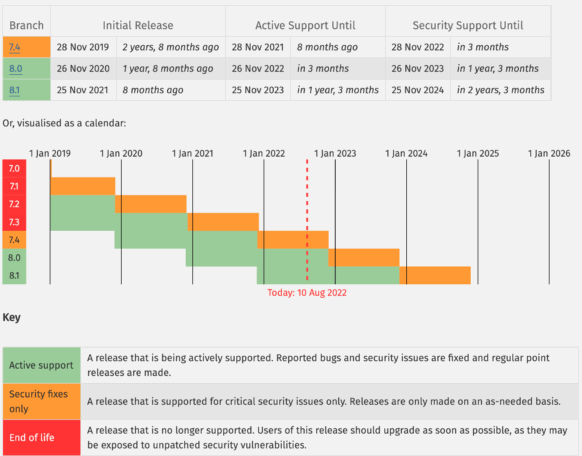
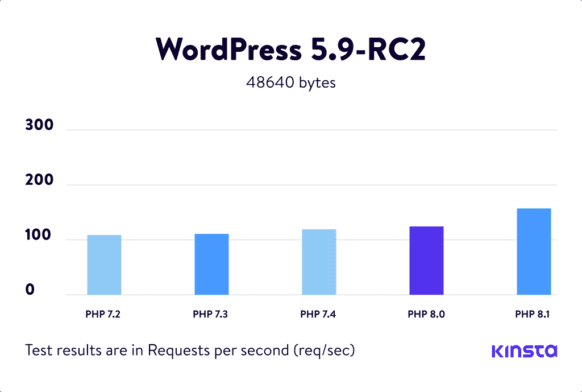
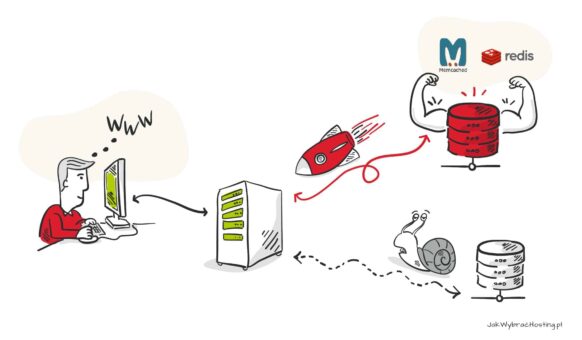
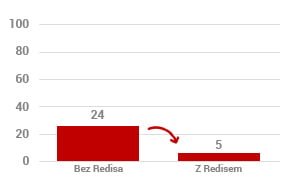


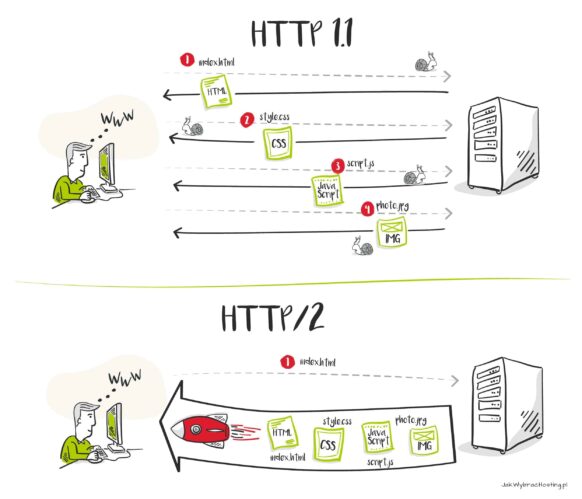
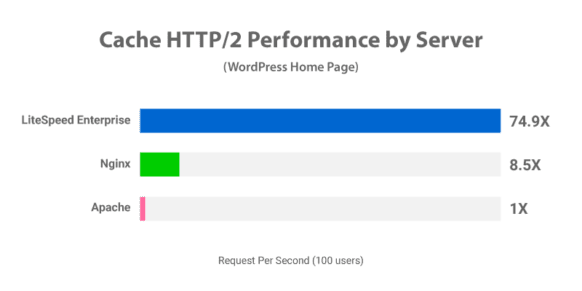


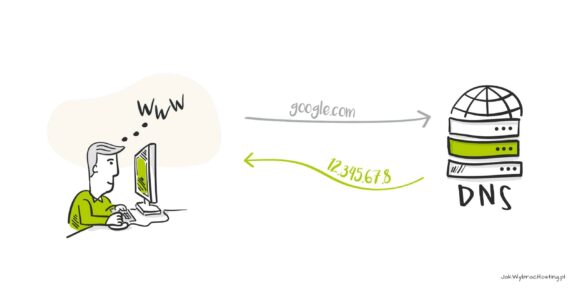



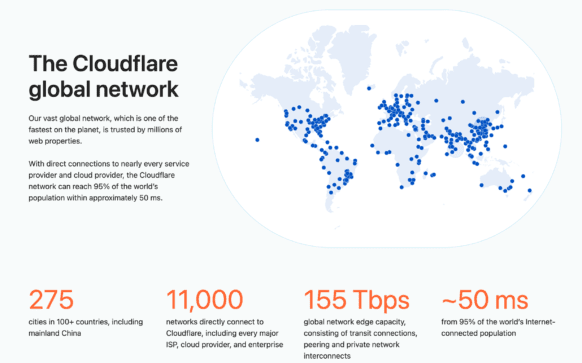
 Author:
Author: